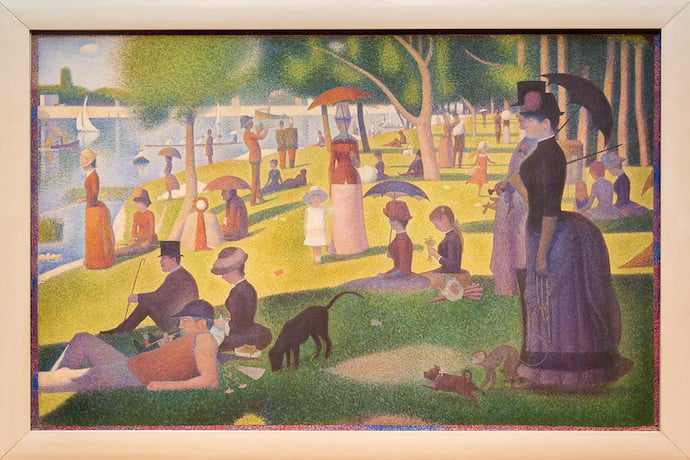Before pixels were even a “twinkle in the eye” of digital artists, the concept of manipulating individual points or dots to create a visual representation of something or someone was causing a splash in the art world that is still rippling to this day.
In the mid-1800s, artist Georges Seurat devised a technique known as Pointillism in which, for instance, he would compose a field of tiny green, yellow, blue and red dots that, in the viewer’s tricked, but rather clever brain, became a green tree. Not only that, but the juxtaposition of the colored points made the tree appear to shimmer and even change color depending on how you looked at it. One of his most famous works, A Sunday Afternoon on the Island of La Grande Jatte, took him two years to paint. (That’s like a million years in the digital age.)
At about the same time Seurat was “pointing” his way to fame, Chemist Henry Fox Talbot was inventing the halftone process. This involved breaking up a solid image, like a photo, into tons of dots in different sizes, shapes and spacing. That clever brain comes into play again to create the illusion of various tones of gray or color.
Fast forward to the 1960s (still the olden days). Artist Roy Lichtenstein used this halftone technique to create some of the most iconic images in pop culture. Although he did admit he was influenced by some of the great artists, like Monet and Picasso, he revealed that his true inspiration was comic books. This is pretty obvious when you look at his artwork, which often contains onomatopoeia (words that sound like actions) such as Varoom, Pow or Wham.
Today, there is a famous artist by the name of Chuck Close who creates similar types of images. He is known as a photo-realist. Close composes his work using material like fingerprint marks, paper pulp, paints, inks and even an old photographic process called daguerreotype. The result is a lot of little bits making up a complete picture.
If you have a chance to visit a museum and see the works of these artists, remember, if you stand too close, you may get the point, but you won’t get the whole picture…until you back up, of course.
Learn More
Roy Lichtenstein
https://www.moma.org/artists/3542
Lichtenstein art
https://www.wikiart.org/en/roy-lichtenstein
Georges Seurat
https://www.georgesseurat.org/
Seurat history for kids
https://www.ducksters.com/biography/artists/georges_seurat.php
7 things to know about Pointilism
https://www.sothebys.com/en/articles/pointillism-7-things-you-need-to-know
Chuck Close and Pointilism
https://jamanetwork.com/journals/jamaophthalmology/fullarticle/420746
What is halftone?
https://en.wikipedia.org/wiki/Halftone

